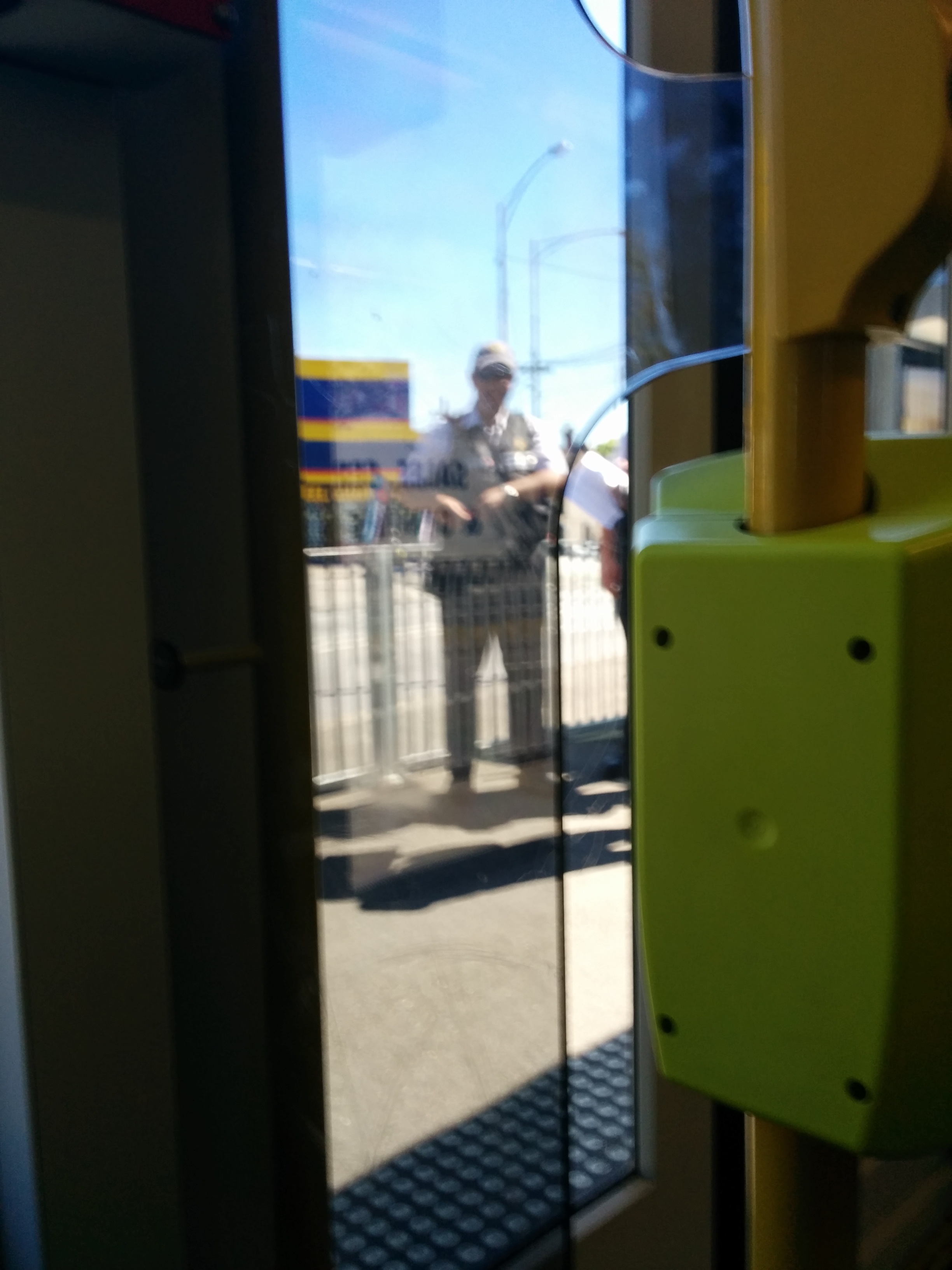[Section 1] Beginner’s Guide to Spotting an Inspector
- [Section 0] The Inspector Formula – Secrets, Tactics, Rights, & Contesting
- [Section 1] Beginner’s Guide to Spotting an Inspector
- [Section 3] Know Your Rights: Handling Ticket Inspectors
- [Section 2] Secrets & Tactics Inspectors don’t want you to know
- [Section 4] How to increase your chances of fine withdrawal
The Inspector
The ticket inspector uniform has changed considerably over the years from a predominantly green and grey to a more standard black and white. This understandably makes them much more authoritative and threatening, enabling them to use even their reputation to deter fare evasion.
The inspector now always wears black pants and shoes. They wear a white shirt, but could wear a variety of clothing over it such as a black vest, jacket, or sweater. About half wear sunglasses, and some wear a black/grey hat.
Their badge is visible from the front, and most usually carry portable myki checkers. Since the 2014 introduction of $75 on-the-spot penalty fares, they have started carrying Eftpos machines with them as well.
The ticket inspector operates in teams of four to seven.
Plain clothes or undercover officers wear a variety of clothing, but can still be identified from the front by their signature badge. While they are not officially required to have it visible (but just have to show it when inspecting tickets), most do.
Important: If you are approached by someone who does not show you a badge and claims that they are an undercover inspector, you should not give them your money or credit cards. Public Transport Victoria advises that you report all incidents to them on 1800 800 007 (6am – midnight daily).
It must be noted that customer service staff always wear the orange vest and are not qualified to fine passengers. They may ask to see tickets or tell you to remove feet from chairs, but are not allowed to administer fines or forcibly detain individuals. While easily mistaken as inspectors, customer service staff are identifiable by their “Customer Service” labels from behind.
[Information courtesy of conversations with various tram inspectors and an interview with one of the customer service staff.]
Frequency and Timing
Tram inspectors have preferences for when they are most vigilant. This varies according to the week as well as time of day. It has been noted that inspectors have become more prevalent recently (2014) compared to previous years. A sharp spike was seen especially during the introduction of Myki systems which are only available at 7-11 stores and major railway stations and removal of payment systems on trams.
Every so often, tram inspectors operate in “blitzes”. During these days, the number of inspectors increase sharply from average. The aim is to increase awareness and fear of inspectors, which understandably would persuade evaders to tag and serve as a strong reminder for the regular public as well. Essentially, the message is that we never know when they will strike, and during “blitz” weeks we get the impression that there are always there and watching.
[Article about Tram Blitzes: http://www.theage.com.au/victoria/fare-evasion-drops-on-melbournes-trains-trams-and-buses-20140123-319zn.html]
While it is seemingly random, there are some correlations of these “blitzes” coinciding with university holidays and examination periods, when more students would be travelling more often.
During a regular day, inspectors are most common during hours of 6am to 6pm. They are most active between rush hours (9-11am and 3-5pm). Weekends feature inspectors with regular consistency throughout the day.
While inspectors could be present during rush hours, they do not board trams due to overcrowding. While this is an informal rule, it makes sense- as it would be difficult for inspectors to fit let alone check for tickets.
[http://www.theage.com.au/victoria/we-avoid-packed-trams-says-inspector-20100601-wvaj.html]
<< Previous Page | Next Page >>
Main Article | Page 1 | Page 2 | Page 3 | Page 4
*Disclaimer: Use the information provided at your own risk. There is no guarantee of the accuracy of information given, and no responsibility will be taken for consequences of actions taken as a result of reading this article. This information is provided for purely educational purposes.
Tags: $75, Bus, fine, fines, infringement, inspection, inspector, Melbourne, Myki, on-the-spot fine, penalty fare, public transport, ticket, ticket inspector, Train, Tram, Yarra Trams














